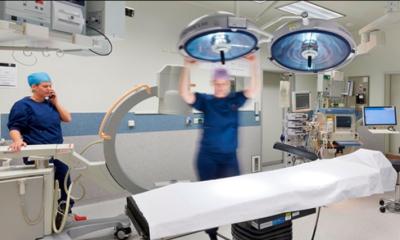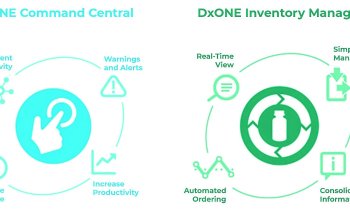Article • Disease control
Common sense defeats infection outbreaks
Loreen Herwaldt doesn’t believe there is a ‘gold standard’ for infection prevention, but she knows there are common sense steps that hospitals can take to prevent disease outbreaks.
Report: Lisa Chamoff
‘I don’t think there’s a gold standard, or a silver bullet, but more like standard operating procedures,’ says Herwaldt, an infectious disease specialist at the University of Iowa, USA. ‘These are things that make sense and have been developed over time.’ Herwaldt discussed the standard of care for infection control during the session ‘Hands-on infection control – what does actually work to prevent infections?’ at the European Congress of Clinical Microbiology and Infectious Diseases (ECCMID) in April.
Engineered control and sensible renovation

Herwaldt’s ‘infection control hierarchy’ includes personal protective equipment for hospital workers and screening checklists for patient, such as asking about travel in cases of Ebola. Hospitals can also use what Herwaldt calls ‘engineered control’, such as placing UV lights in air ducts, installing appropriate ventilation in isolation rooms and disinfecting drinking water systems and cooling towers to prevent the spread of legionella.
Hospital executives should also consider infection control when planning renovation projects. ‘During the SARS epidemic, in Toronto, the hospital hit hardest had renovated its emergency department and decided it was too expensive to put in private rooms,’ Herwaldt notes. ‘There were curtains. A number of patients became ill because they happened to be in the ED at the same time.’
Thinking outside the box
The specialist also discussed evolving technologies that have been borrowed from other disciplines to investigate outbreaks. For example, partial or whole genome sequencing and statistical modelling has emerged as a way to pinpoint the source of certain outbreaks. ‘It’s probably not going to be an everyday tool for most hospitals, but it could be useful in some cases,’ Herwaldt believes. Regional modelling of carbapenem-resistant bacteria, for example, shows the highest incidence are in short-stay hospitals and, she notes, larger referring hospitals have a lower prevalence. ‘Even modelling on a community level can help inform investigations at individual hospitals,’ she says. ‘If there are facilities that are the most problematic, you need to screen patients from those facilities.’
Facilities can also use human-factors engineering to inform infection control protocols. In her presentation, Herwaldt explained how technology, such as cameras in patient rooms and markers on personal protective equipment, could be used to analyse hand hygiene in hospitals. ‘Many of the things I’m talking about can play a role in day-to-day infection prevention,’ the expert points out. ‘We’ve been able to move forward because we’ve been interacting with people in other disciplines.’
Profile:
Dr Loreen Herwaldt is an infectious disease specialist at the University of Iowa, USA, where she researches healthcare-related infections and infection prevention protocols. She holds a medical degree from University of Wisconsin School of Medicine and Public Health.
Don't miss:
Loreen Herwaldt: The standard of care for infection control in 2018
Saturday, April 21 2018, 08:45 - 09:05
Hall D
Session: Hands-on infection control - what does actually work to prevent infections?
21.04.2018








